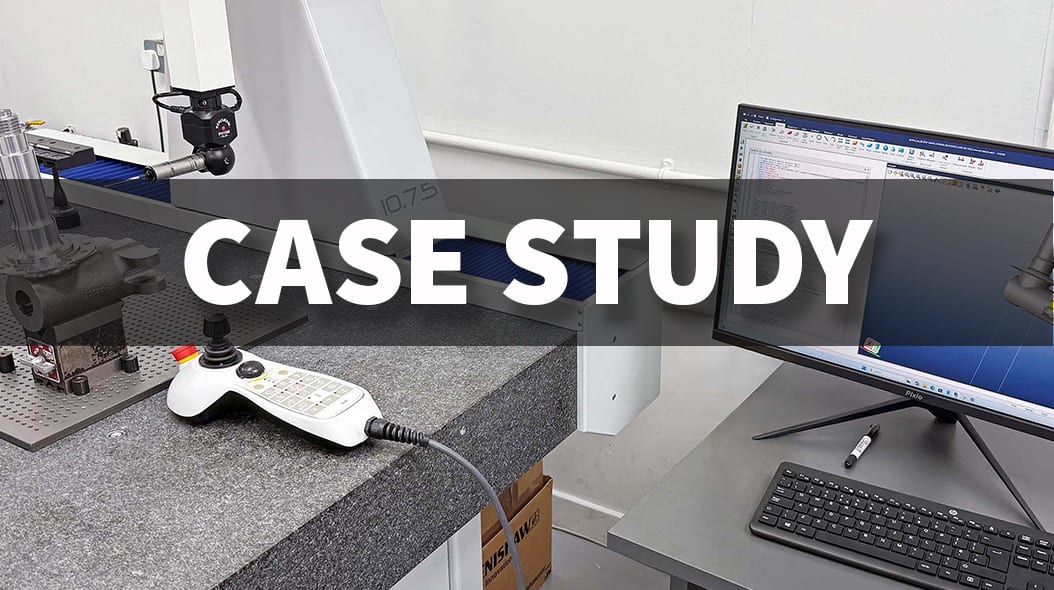H2 Deck By Bold Name
h2 xxxxxx
H1 xxxxxx
h2 xxxxx

Management
While the need for skilled workers continues to grow, many companies are learning that traditional approaches to hiring and training no longer resonate with early-career professionals. By Genevieve Diesing
Reframing Quality Roles for a New Generation
Management
H2 Deck Info By Paragraph Style Bold
Headline
As experienced workers retire, manufacturers are reexamining how to attract and retain younger employees in quality roles — including how they present quality careers to Gen Z, a generation with different priorities.
The Manufacturing Institute and Deloitte project that 3.8 million manufacturing jobs could go unfilled by 2030.
While the need for skilled workers continues to grow, many companies are learning that traditional approaches to hiring and training no longer resonate with early-career professionals. For example, a 2024 McKinsey report found that unlike older generations, Gen Z places less emphasis on pay and more on flexibility, career development, meaningful work, psychological safety, and caring leadership. Compensation ranks only sixth in importance for taking a job and eighth for staying in that role.
Gen Z wants to feel safe making mistakes, learning, and growing — and it wants those efforts to lead to professional growth. McKinsey cites lack of advancement is the top reason Gen Z plans to leave manufacturing jobs. Companies that create clear, supported pathways, such as skills-based roles and cross-functional training, see higher retention.
For many in Gen Z, job satisfaction depends on more than pay and benefits. Younger employees often seek roles that offer growth, purpose, and the chance to work with advanced equipment and digital systems.
Several manufacturers and industry organizations are responding by adjusting how they hire, train and define quality work.
Expanding Role Flexibility and Mentorship
At Zeiss Industrial Quality Solutions, Russ Wylie, director of field service, said the company has adapted its approach to better meet the expectations of a changing workforce. That includes broadening hiring criteria and designing career paths that reflect a wider range of interests and experience levels.
“Gen Z workers want to be engaged in a career that will be rewarding but challenging with a clear path to growth,” Wylie said. “Gen Z is not content to sit in the same role with the same issues day after day.”
To meet those expectations, Zeiss has updated its training and support systems to include field-based learning and remote support—giving new hires more real-world exposure and diverse challenges on the job. “We’ve hired a former chef and an electronics repair associate—both are flourishing and bringing fresh perspectives to the team,” Wylie said. “They’re problem solvers. They want to know how something works, how to fix it. That mindset translates well into quality.”
Zeiss also prioritizes mentorship. Each new team member is paired with a senior technician, which helps build confidence and foster peer problem-solving. “They rely on each other to help solve the inevitable challenges of field service — and we’re seeing this approach have a clear impact on retention across the board,” Wylie said.
The company’s training now includes classroom learning, virtual reality modules, and mentorship from senior technicians. “We can do real-time training from anywhere in the world,” Wylie said. “Our virtual reality tools are helpful when someone’s stuck in the field and needs help visualizing the issue.” The immersive tools are designed to support technicians no matter their location, enabling a more flexible and responsive approach to onboarding and development.
“We’ve learned that recognition and engagement are essential to retaining Gen Z talent,” Wylie said. “They want to feel like valued members of the team, contributing ideas and playing an active role in improving the team’s overall effectiveness.”
Raising the Visibility of Quality Careers
Efforts to attract younger talent to manufacturing often focus on production or engineering. But quality careers still receive limited attention in many outreach efforts. That’s something Kim Humphrey, president and CEO of the Association for Manufacturing Excellence (AME), would like to see change.
“Today’s students are aware of the wide variety of exciting career opportunities in manufacturing,” Humphrey said. “They recognize that these are not the factory jobs of the past, but rather innovative, well-paid careers with advancement potential driven by cutting-edge technology and creativity.”
Still, she said, more needs to be done to raise awareness of quality careers in particular—roles that include continuous improvement, auditing and data-driven decision-making. “By expanding our focus to include quality careers, we can help students understand that these roles go beyond inspections or compliance,” Humphrey said.
To support student readiness, AME offers Lean certifications at the yellow, green and black belt levels to connect students to the principles of continuous improvement and help them prepare for work in any industry. The organization also provides free student memberships to support early professional development.
But outreach can’t stop with students, Humphrey said. “Parents influence career decisions, but many are unaware of the well-paying, fulfilling careers available in fields like quality and advanced manufacturing,” she said. “One effective approach is for local communities to sponsor company tours for students, parents and counselors. Seeing robotics in action and interacting with quality professionals can inspire students and help them visualize a future in the industry.”
Connecting Early Education with Real-World Skills
Terry Stransky, a senior geologist at Terracon and adjunct lecturer at Brunswick Community College, said his teaching encourages students to apply scientific thinking to real-world materials and systems—skills that align closely with the kind of reasoning used in quality roles.
“When I do my classes, both at the college level and in elementary schools, I bring in rock samples, and we talk about how these minerals apply to your everyday life,” he said. “For example, most kids have a cell phone, and there are literally a dozen minerals that are used in the manufacturing of that cell phone.”
This hands-on approach helps students connect science to the products they use daily. Stransky also emphasizes the importance of critical thinking, particularly when evaluating data and outcomes.
“We have come to rely so much on computers, and we want to use the first answer that AI gives us without critically evaluating whether or not it’s true,” he said. “With my students, we talk about the difference between a hypothesis and a scientific theory. When we get more information that contradicts our theory, we don’t throw out that information. We change the theory.”
The Value of Experience
According to the 2024 Deloitte and Manufacturing Institute talent study, more than 90% of surveyed manufacturers are forming partnerships to improve job attraction and retention. On average, companies reported collaborating with four or more organizations, most often technical colleges (73%), industry associations (58%), universities (48%), state and regional economic development agencies (47%), and K-12 schools (44%).
These partnerships focus heavily on creating and supporting hands-on training programs that develop new talent through direct experience.
Stransky said his students also benefit from real-world exposure through internships. In his own experience as a geologist, interns work directly with professionals in the field. “They are taught to do the same work that established professionals do, rather than just pushing papers in an office,” he said. “As a geologist, you’re going to go out on a drill rig, and you’re going to sweat, you’re going to get muddy, you’re going to get tired.”
That type of immersive learning is part of what younger workers increasingly expect. They want to contribute, learn and understand how their work matters.
As the field continues to evolve, organizations that embrace these cultural and structural changes will be best positioned to build the quality teams they need for the future.
